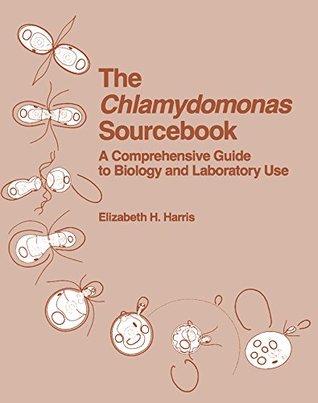Download The Chlamydomonas Sourcebook: A Comprehensive Guide to Biology and Laboratory Use - Elizabeth H. Harris file in PDF
Related searches:
The Chlamydomonas Sourcebook: Cell Motility and Behavior
The Chlamydomonas Sourcebook: A Comprehensive Guide to Biology and Laboratory Use
The Chlamydomonas Sourcebook: Organellar and Metabolic
The Chlamydomonas Sourcebook, volume 2: Organellar and
HS, HSA and YA - Chlamydomonas Resource Center
The chlamydomonas sourcebook (second edition) volume 2, 2009, pages 915-935.
Harris has played a major role in the development of this organism as a model system.
25 jul 2012 chlamydomonas reinhardtii is a model system for studying cilia, photosynthesis, and other core features of eukaryotes, and is also an emerging.
To read the full-text of this research, you can request a copy directly from.
The green alga chlamydomonas is widely used as an experimental model system for studies in cellular and molecular biology, and in particular plant.
Reinhardtii) has proved to be an outstanding model for investigation of signal transduction, rhodopsin-based vision, and the evolution of sexual processes. The chlamydomonas sourcebook, first published in 1989, summarized the development of this alga as a laboratory system beginning in the 1940s. Since the first edition published, chlamydomonas research has grown significantly.
This second volume of the chlamydomonas sourcebook provides the background and techniques for using this important organism in plant research. From biogenesis of chloroplasts and mitochondria and photosynthesis to respiration and nitrogen assimilation, this volume introduces scientists to the functions of the organism.
Purchase the chlamydomonas sourcebook: introduction to chlamydomonas and its laboratory use - 2nd edition.
The chlamydomonas sourcebook, published in 1989 by academic press, summarized the development of this alga as a laboratory system beginning in the 1940s, reviewed each major research area, as well.
Harris has played a major role in the development of this organism as a model system. Her previous version of the chlamydomonas sourcebook which published in 1989, has been a classic in the field and is considered required reading for anyone working with this organism.
This chapter decribes the architecture of chlamydomonas, the cell wall and the eyespot. The nucleus, golgi apparatus, contractile vacuoles, small, membrane-bound bodies, such as lysosomes, peroxisomes, and glyoxysomes, mitochondria, chloroplast and the bright orange eyespot, or stigma are explained individually.
'a series of fortunate events: introducing chlamydomonas as a reference.
Ca2+ signalling plays a central role in regulating swimming motility in chlamydomonas and this aspect of signalling is the most extensively characterised in this.
'the chlamydomonas sourcebook' provides the background and techniques for using this important organism in plant research. From biogenesis of chloroplasts and mitochondria and photosynthesis to respiration and nitrogen assimilation, this volume introduces scientists to the functions of the organism.
Because chlamydomonas has been the premier model for investigating the function and behavior of cilia and flagella, the chapters summarize the current state of knowledge in these areas as it applies to all ciliated organisms. Thus, this volume will be an essential source for all students and researchers interested in cell motility.
The chlamydomonas sourcebook book description� the green alga chlamydomonas is widely used as an experimental model system for studies in cellular and molecular biology, and in particular plant molecular biology. This book is the only single modern compendium of information on its biology and in particular its molecular biology and genetics.
Description the green alga chlamydomonas is widely used as an experimental model system for studies in cellular and molecular biology, and in particular plant molecular biology. This book is the only single modern compendium of information on its biology and in particular its molecular biology and genetics.
The chlamydomonas sourcebook belongs on the lab bench of everyone working with these green algae. Features * provides access to previously unpublished data from genetic analysis * provides descriptions of mutant strains * depicts summary tables comparing properties of different species and their mutant strains.
Book description� 'the chlamydomonas sourcebook' provides the background and techniques for using this important organism in plant research. From biogenesis of chloroplasts and mitochondria and photosynthesis to respiration and nitrogen assimilation, this volume introduces scientists to the functions of the organism.
24 jul 2018 side-by-side version for 3d tvs 4k (full horizontal hd for each eye)the video shows how the green algae cell chlamydomonas rheinhardtii.
These single-celled organisms are aquatic, living in freshwater habitats.
24 jul 2018 2d versionthe video shows how the green algae cell chlamydomonas rheinhardtii can be used to create fuel.
The chlamydomonas sourcebook, volume 2: organellar and metabolic processes data provider: open repository and bibliography.
The green alga chlamydomonas is widely used as an experimental model system for studies in cellular and molecular biology, and in particular plant molecular biology. This book is the only single modern compendium of information on its biology and in particular its molecular biology and genetics.
21 sep 2017 chlamydomonas reinhardtii is a single celled alga that moves by beating its two flagella.
Buy the chlamydomonas sourcebook: a comprehensive guide to biology and laboratory use on amazon.
A major part of the regulation of hydrogenase activity in chlamydomonas occurs via differential hyda1 gene transcription.
These initial findings represent the first glimpse through a genomic window onto the highly complex metabolisms that characterize a unicellular, photosynthetic.

Post Your Comments: